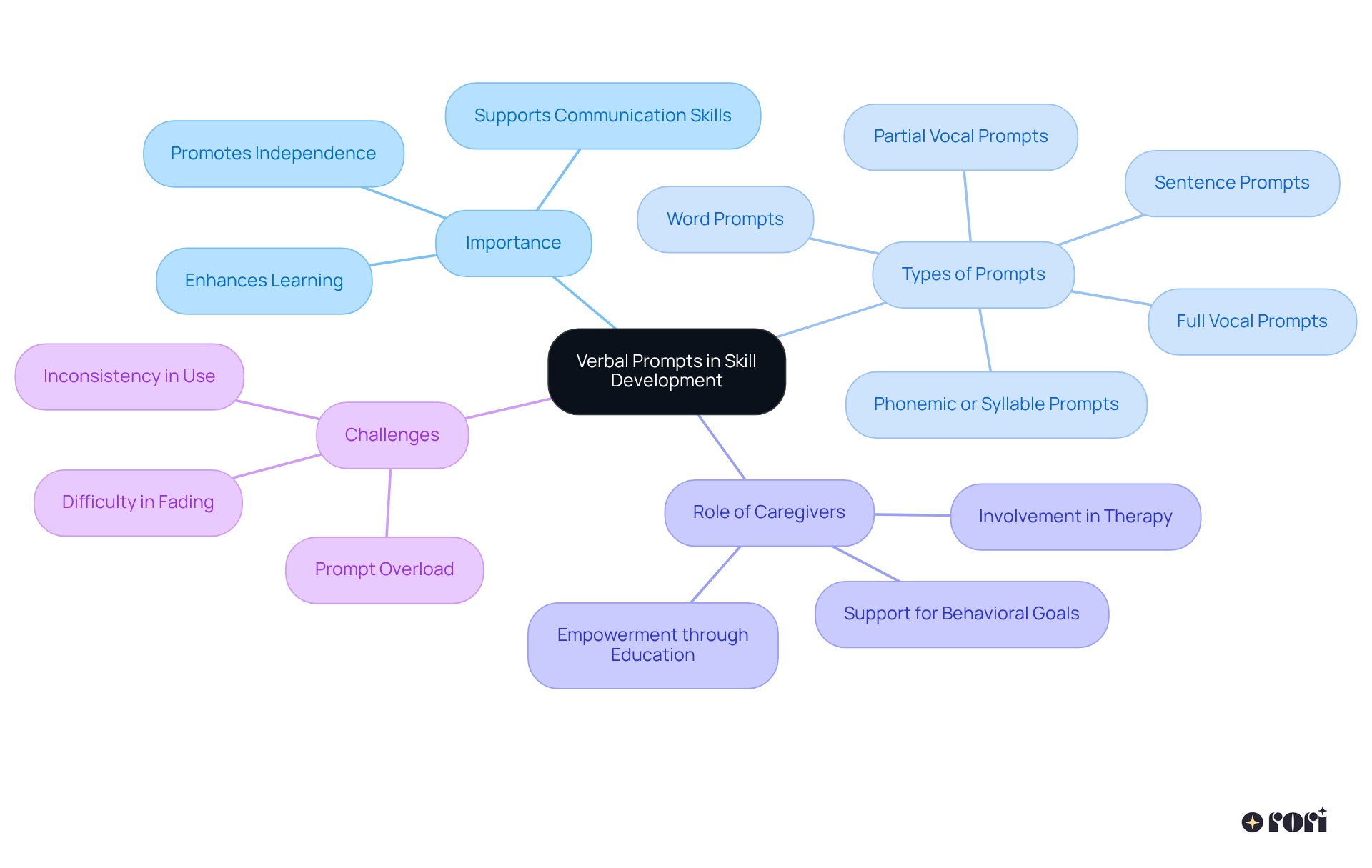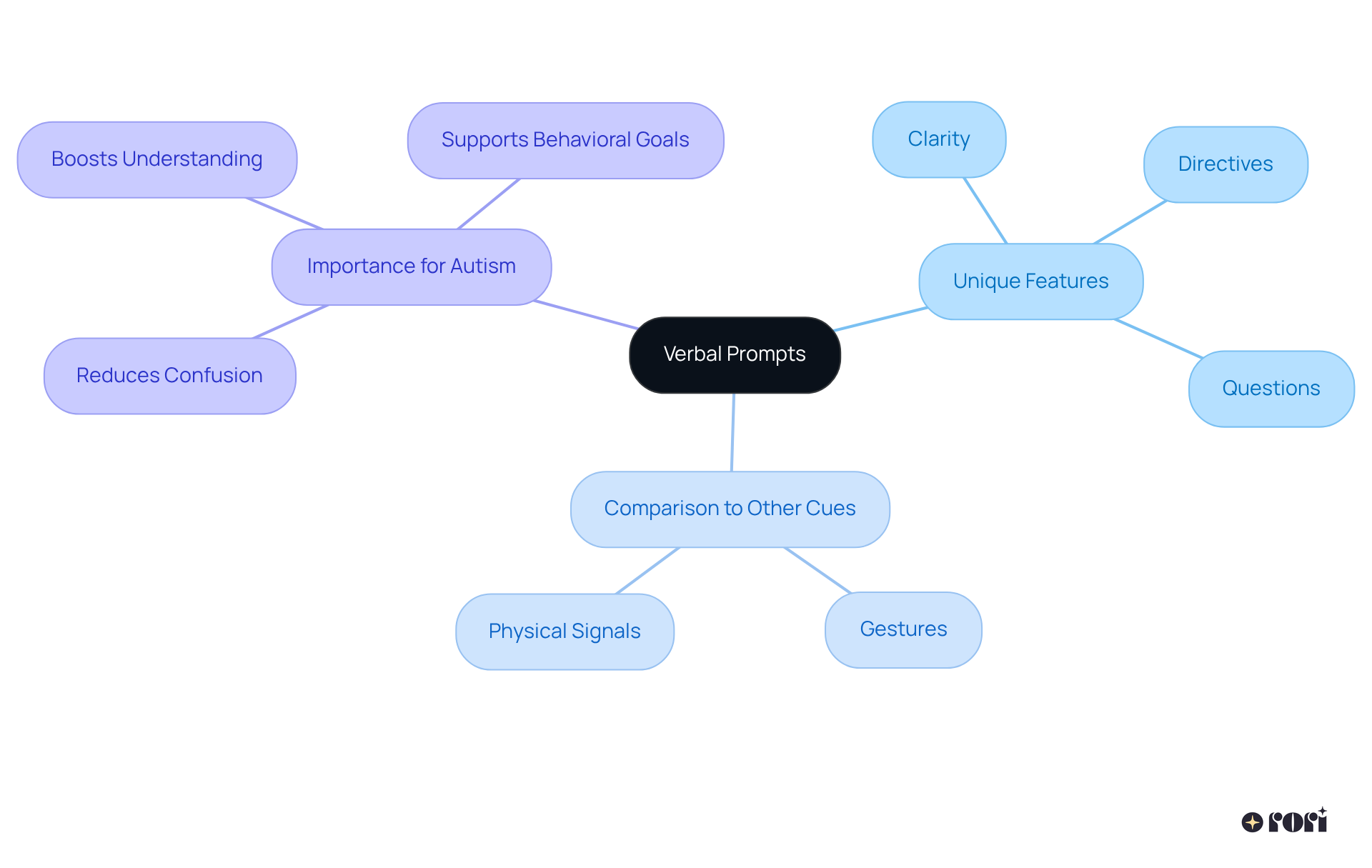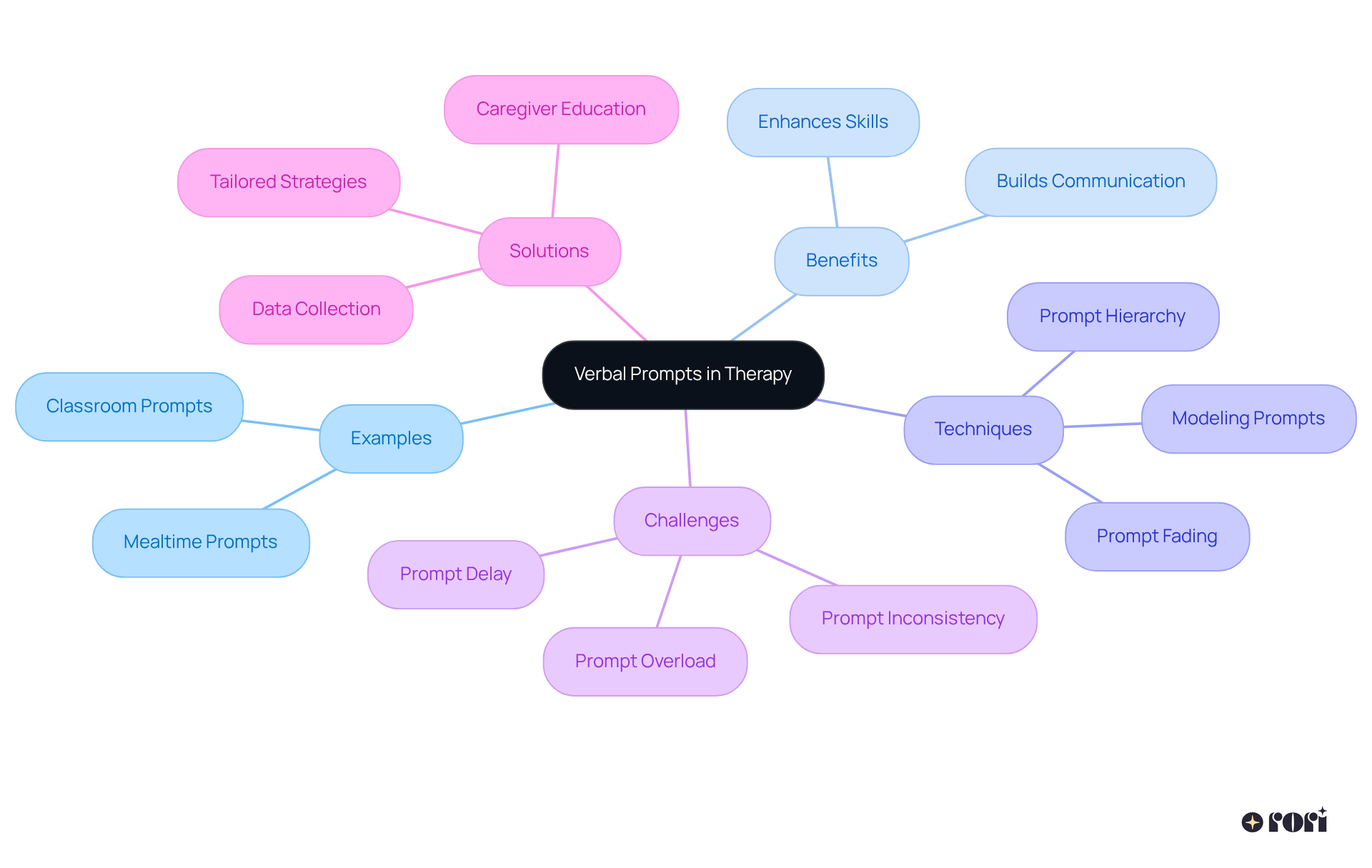Verbal prompts are those friendly spoken cues we often use in Applied Behavior Analysis (ABA) therapy. They play a crucial role in encouraging desired behaviors and communication skills, especially in children with autism. This article shines a light on how effective these prompts can be! When used consistently, particularly with the active involvement of caregivers, they can lead to remarkable improvements in language development and behavior.
Imagine the difference it can make when parents actively engage with their children using these prompts! It’s not just about therapy; it’s about creating connections and fostering communication. Let’s explore this together and see how we can support our little ones on their journey!
Understanding the nuances of communication is essential, especially for parents navigating the complexities of child development. 🌱 Verbal prompts, a fundamental aspect of Applied Behavior Analysis (ABA) therapy, are powerful tools that can enhance learning and foster independence in children, particularly those with autism. As caregivers seek effective strategies to support their child's growth, a crucial question arises: how can simple spoken cues transform challenges into opportunities for skill development and improved behavior?
Exploring the role and impact of verbal prompts reveals insights that can significantly influence a child's journey toward greater communication and autonomy. Let’s explore this together! 🤗
What is a verbal prompt? It is a spoken cue designed to help individuals show a desired behavior or response. In the world of Applied Behavior Analysis (ABA) therapy, what is a verbal prompt can include a range of signals, from simple instructions to more subtle hints that guide a young person in completing specific tasks. For instance, when a therapist says, 'Please pick up your toys,' it encourages a child to tidy up. This approach is quite effective; research shows that 90% of individuals make significant progress when they receive the recommended hours of ABA therapy, especially with active caregiver participation.
Verbal cues, which can be understood as what is a verbal prompt, are among the least intrusive guidance techniques, making them a fantastic choice for encouraging communication and skill development in individuals with autism. Their significance is underscored by findings that indicate a 22% improvement in language development outcomes when what is a verbal prompt is utilized. Therapists often emphasize what is a verbal prompt, as it enhances learning engagement and bridges the gap between a young person's current skills and their potential for greater independence.
In practice, what is a verbal prompt helps with task completion and also plays a vital role in boosting communication skills. For example, when a child is asked what is a verbal prompt to answer a question, it fosters interaction and reinforces their use of language. This method aligns perfectly with the overarching goals of ABA therapy, which focuses on increasing positive behaviors, like effective communication, while reducing negative ones. The tailored plans crafted by certified behavior analysts include measurable goals and evidence-based techniques that enhance the effectiveness of spoken cues.
Active involvement from caregivers, supported by education in ABA principles, empowers them to provide the right support at home. This complements professional interventions and promotes consistency. Research indicates that effective prompting strategies can lead to a 31% reduction in problem behaviors, highlighting their importance in ABA interventions. Educating caregivers equips parents with the knowledge and skills needed to make informed decisions that positively impact their child’s development.
Overall, understanding what is a verbal prompt is a crucial aspect of ABA therapy, providing essential support that helps children with autism improve their communication skills and engage more fully in their environments. Let’s explore this together and see how these strategies can make a difference in your journey!

Verbal cues play a crucial role in helping kids enhance their abilities and change behaviors. They provide the signals young ones need to tackle tasks on their own. For example, when teaching a child to greet others, a therapist might ask, 'What do you say when someone says hello?' This not only encourages the child to respond appropriately but also strengthens essential social skills, which are so important for kids with autism and other communication challenges.
Using spoken cues strategically can really boost a child's learning experience. It's a key part of ABA therapy, which is customized to fit each child's unique needs. Research shows that when recommended hours of ABA therapy are fully implemented with engaged caregiver involvement, 90% of kids show significant progress. This highlights how vital early intensive behavioral intervention (EIBI) is for improving learning, communication, and social skills.
Understanding the concept of 'fading'—gradually reducing cues to promote independence as the child becomes more skilled—is also essential. To understand what is a verbal prompt, it's important to recognize that different types, like Full Vocal Prompts, Partial Vocal Prompts, and Sentence Prompts, can be tailored to meet individual needs, making interventions even more effective.
Moreover, empowering caregivers with ABA principles and strategies is key to supporting their child's behavioral goals. When caregivers are educated, it leads to better support, informed decision-making, and improved behavioral outcomes. This empowerment can have a significant impact on a child's development. However, challenges like request overload and inconsistency can pop up, so it’s important for parents to be aware of these when implementing strategies. By thoughtfully using communication cues and understanding these challenges, therapists can enhance a child's learning experience, fostering independence and confidence in various settings. Let’s explore this together!

What is a verbal prompt makes verbal cues quite unique compared to other types of cues, like gestures or physical signals, because they rely entirely on spoken language to get a response. These spoken cues raise the question of what is a verbal prompt, as they are all about clarity and straightforwardness; they usually involve simple directives or questions that guide the learner toward the right action. For instance, while a gesture might be pointing to an object, a spoken prompt would be saying, 'Can you hand me the ball?' This kind of clear communication is super important for kids with autism, as understanding what is a verbal prompt can help them thrive on simple spoken cues that reduce confusion and boost understanding.
When caregivers embrace ABA principles and strategies, they can play a vital role in supporting their children's behavioral goals through active involvement. This teamwork not only enhances the verbal cues used by behavior technicians but also fosters consistency in the child’s learning environment, leading to better behavioral outcomes. Let’s explore this together! Your engagement can make a real difference in your child’s journey.

Understanding what is a verbal prompt is essential, as verbal cues are such a vital part of our daily lives, especially when it comes to helping our little ones with autism learn and grow. Imagine it's mealtime, and a parent gently asks, 'What do you need to do before eating?' This simple nudge encourages the child to wash their hands, reinforcing those important hygiene habits. In the classroom, a teacher might say, 'Can you tell me what color this is?'—a lovely way to help a child recognize colors and boost their cognitive skills.
These examples show how easily we can weave spoken cues into our everyday routines, providing essential support that fosters independence and learning. Research highlights that frequently using verbal cues, which exemplifies what is a verbal prompt, not only enhances skills but also builds communication abilities, allowing children to express themselves more clearly.
Experts agree that understanding what is a verbal prompt and incorporating it into daily activities creates a positive learning environment, paving the way for better behavior and skill development. By keeping a structured approach to prompting, caregivers and therapists can truly make a difference in a child's ability to manage daily tasks and social interactions, ultimately supporting their overall growth. This active participation empowers caregivers, boosting their confidence and easing stress within the family.
Moreover, using verbal cues systematically is key to promoting independence, which raises the question of what is a verbal prompt. Techniques like fading assistance, where support is gradually reduced, can help children complete tasks on their own over time. It's also helpful to mix in different types of cues—like gestures, visuals, and physical prompts—to suit various learning situations.
Of course, challenges like request overload or inconsistency can slow progress, so it's important for parents to stay mindful of these potential hurdles. Recognizing these challenges highlights the need for caregiver education; ongoing training can equip caregivers with effective strategies for using cues. Plus, continuously gathering data is crucial for evaluating what is a verbal prompt and how well it is working, ensuring that strategies are tailored to meet each child's unique needs. This thoughtful approach not only enhances behavioral outcomes but also empowers caregivers to support their child's development effectively. Let’s explore this together!

Understanding the significance of verbal prompts is so important for parents navigating the world of Applied Behavior Analysis (ABA) therapy. These spoken cues are like vital tools that help facilitate communication and skill development in children, especially those with autism. By providing clear and straightforward guidance, verbal prompts empower children to engage more effectively with their environment, fostering independence and enhancing their learning experiences.
Throughout this article, we've explored key insights, including:
Research shows that when caregivers are educated in ABA principles, they can significantly contribute to their child's progress, leading to improved communication skills and reduced problem behaviors. We also highlighted the concept of fading prompts to encourage independence, underscoring the necessity of tailoring interventions to meet individual needs.
Ultimately, the effective use of verbal prompts can truly transform a child's learning journey. By incorporating these strategies into daily routines, parents can create a supportive environment that nurtures their child's growth and development. Embracing the principles of ABA therapy not only enhances behavioral outcomes but also empowers caregivers to make informed decisions that positively impact their child's future. Engaging with these techniques is a crucial step toward fostering a more communicative and independent life for children with autism. Let’s explore this together and make a positive difference in your child's journey!
What is a verbal prompt?
A verbal prompt is a spoken cue designed to help individuals exhibit a desired behavior or response, ranging from simple instructions to subtle hints that guide task completion.
How does a verbal prompt work in ABA therapy?
In ABA therapy, a verbal prompt encourages individuals to perform specific tasks, such as when a therapist instructs a child to 'Please pick up your toys,' which helps them learn to tidy up.
What is the effectiveness of verbal prompts in ABA therapy?
Research shows that 90% of individuals make significant progress with the recommended hours of ABA therapy when active caregiver participation is involved, highlighting the effectiveness of verbal prompts.
Why are verbal prompts considered a good choice for individuals with autism?
Verbal prompts are among the least intrusive guidance techniques, making them effective for encouraging communication and skill development in individuals with autism.
What impact do verbal prompts have on language development?
The use of verbal prompts has been associated with a 22% improvement in language development outcomes for individuals receiving ABA therapy.
How do verbal prompts enhance learning engagement?
Verbal prompts help bridge the gap between an individual's current skills and their potential for greater independence, enhancing their engagement in learning.
In what ways do verbal prompts assist with communication skills?
Verbal prompts encourage interaction and reinforce language use, which aligns with the goals of ABA therapy to increase positive behaviors like effective communication.
What role do caregivers play in the use of verbal prompts?
Active involvement from caregivers, supported by education in ABA principles, empowers them to provide appropriate support at home, complementing professional interventions.
What is the impact of effective prompting strategies on problem behaviors?
Effective prompting strategies can lead to a 31% reduction in problem behaviors, emphasizing their importance in ABA interventions.
Why is understanding verbal prompts important in ABA therapy?
Understanding verbal prompts is crucial as they provide essential support that helps children with autism improve their communication skills and engage more fully in their environments.